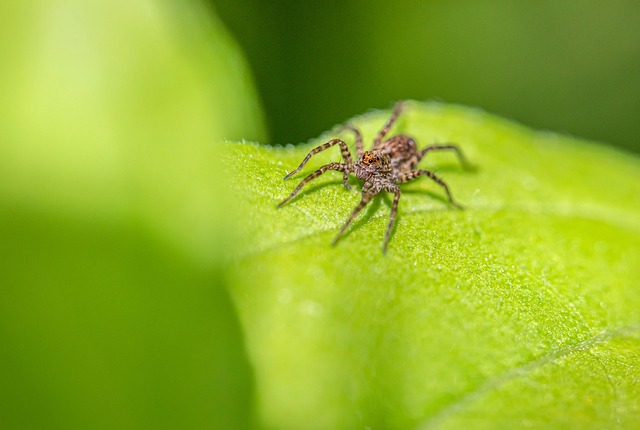Professional wasp removal services are vital for effective pest control due to varying wasp behavior and nesting patterns. Experts use specialized tools and strategic inspections to locate nests, employing targeted methods for safe removal. By understanding wasp preferences and utilizing essential tools, professionals ensure comprehensive identification and tailored strategies, prioritizing resident safety and preventing future infestations. DIY methods are suitable for small nests, but complex cases require expert knowledge and specialized equipment for safe, efficient, and environmentally conscious professional wasp removal.
In the quest to ensure a safe and pest-free environment, understanding wasp behavior is key. Wasps are not only a nuisance but can also pose significant risks with their stings. This article delves into comprehensive strategies for identifying wasp nesting areas through thorough inspections. From recognizing behavioral patterns to employing essential tools, we offer practical tips. We also explore when and how to engage professional wasp removal experts, emphasizing the importance of expert intervention for safe and effective solutions.
Understanding Wasp Behavior and Nesting Patterns
Wasp behavior and nesting patterns are complex, varying by species and environmental factors. Professionals in wasp removal understand that some wasps prefer structured nests built in protected areas like trees, while others opt for underground burrows or cavities in buildings. Knowing these patterns is crucial for effective pest control. By identifying where wasps tend to nest, professionals can employ targeted strategies to disrupt their habitats and protect affected areas.
Regular inspections by seasoned experts can reveal subtle signs of wasp activity, such as entry and exit points, distinct nesting materials, and the presence of workers or queens. This knowledge enables the use of appropriate methods for removal—whether that involves sealing off entry points, safely dismantling nests, or using specialized treatments to deter future colonies. Engaging professional wasp removal services ensures thorough understanding and safe handling of these potentially hazardous insects.
Essential Tools for Comprehensive Inspections
Professional wasp removal experts rely on a few essential tools to conduct thorough inspections and identify potential nesting areas. First, a good pair of binoculars is crucial for scanning hard-to-reach areas from a safe distance. Wasps often build nests high up in trees or under roof overhangs, so having clear vision helps in spotting these hidden locations.
Additionally, a bright flashlight with adjustable focus allows inspectors to peer into dark corners and crevices where wasps may be establishing their colonies. The right tools enable professionals to conduct comprehensive inspections, ensuring that every potential nesting site is discovered and addressed effectively, providing safety for residents and preventing future pest problems through expert wasp removal.
Strategies to Locate Nesting Areas Effectively
To locate nesting areas effectively, it’s crucial to employ strategic approaches tailored by professionals in wasp removal. One key method involves meticulous inspection of common habitats like walls, attics, and tree branches. Wasps tend to build nests in secluded, elevated spaces, making a visual scan essential. Trained experts also use specialized tools to detect even the most hidden compartments where wasps might have established their homes.
Additionally, understanding wasp behavior is vital. They often choose areas with easy access to food sources and water. By identifying these resources and following their trails, professionals can uncover nesting sites. Regular maintenance checks and sealing potential entry points are also effective preventive measures that help deter wasps from returning.
Professional Wasp Removal: When and How to Engage Experts
Many homeowners opt for professional wasp removal services due to the potential risks associated with wasps and their nests. While DIY methods can be effective for small or visible nests, complex situations call for expert intervention. Engaging professionals is especially crucial when dealing with large or hidden nests, as they possess the specialized equipment and knowledge to access hard-to-reach areas safely.
Experts in wasp removal will first conduct a thorough inspection to identify nest locations and determine the extent of the infestation. They then employ safe and effective methods tailored to each case, ensuring minimal disruption to your environment. By choosing professional services, you benefit from their expertise, quick response times, and comprehensive solutions, ultimately providing a safer and more efficient wasp control strategy.
Comprehensive inspections are key to identifying and mitigating stinging pest nesting areas. By understanding wasp behavior, equipping yourself with essential tools, and employing effective location strategies, you can proactively address potential hazards. While DIY methods have their place, professional wasp removal services offer specialized knowledge and equipment for complex or dangerous situations. Remember, early detection and prompt action, often facilitated by experts, are crucial to ensuring safety and minimizing disruption to your environment.
